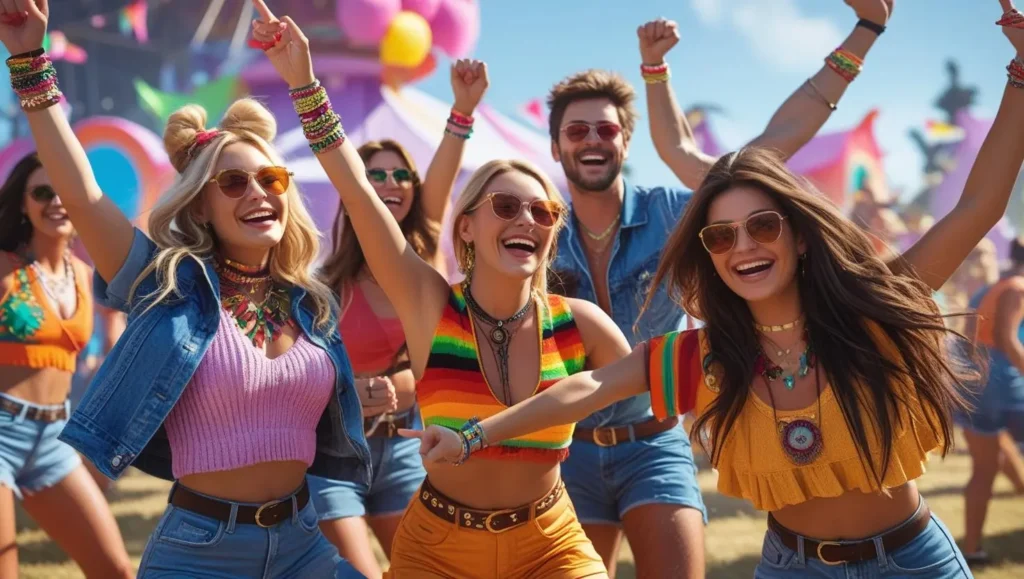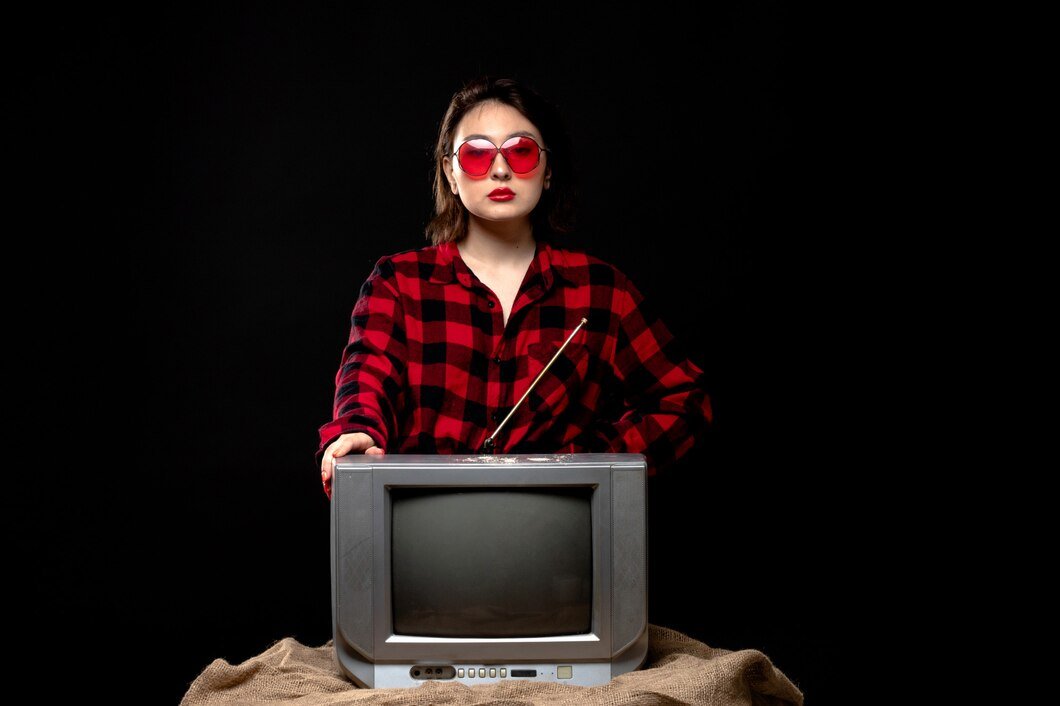Introduction
Scroll through social media for five minutes, and you’ll likely stumble upon perfectly curated feeds showcasing dream vacations, flawless selfies, and enviable lifestyles. But what happens when the cameras stop rolling and influencers step outside their carefully constructed personas? Welcome to the world of influencers gone wild—a phenomenon that’s reshaping how we view digital celebrities and their accountability.
The phrase “influencers gone wild” has become a cultural touchstone, representing those moments when social media stars make headlines for all the wrong reasons. From public meltdowns and legal troubles to offensive content and career-ending scandals, these incidents remind us that internet fame comes with immense responsibility. In this comprehensive guide, we’ll explore the psychology behind influencer controversies, examine notorious cases, and discuss the lasting impact on both creators and their audiences.
What Does “Influencers Gone Wild” Really Mean?
The term “influencers gone wild” refers to social media personalities who’ve engaged in controversial, unethical, or illegal behavior that damages their reputation and brand partnerships. These incidents range from minor PR disasters to serious criminal activities that result in legal consequences.
The Evolution of Influencer Culture
Social media influencing has evolved from a hobby into a multi-billion-dollar industry. What started with bloggers and YouTubers sharing genuine content has transformed into a highly commercialized ecosystem where authenticity often takes a backseat to profitability. This pressure-cooker environment creates the perfect storm for controversial behavior.
Key factors contributing to influencer controversies include:
- Constant pressure to create viral content at any cost
- Lack of professional training or media guidance
- Sudden wealth and fame without proper support systems
- Decreased privacy and increased public scrutiny
- Algorithm-driven platforms that reward extreme behavior
- Disconnect between online persona and real-life values
Common Types of Influencer Controversies
Understanding the spectrum of influencer scandals helps us recognize patterns in the digital landscape. These controversies typically fall into several categories, each with distinct characteristics and consequences.
Ethical violations include promoting products without proper disclosure, scamming followers with fake giveaways, or selling unverified products. These breaches of trust can permanently damage an influencer’s credibility.
Offensive content encompasses racist remarks, cultural appropriation, insensitive jokes about serious topics, or tone-deaf responses to social issues. In our increasingly connected world, these missteps spread rapidly and attract widespread condemnation.
Legal troubles range from tax evasion and fraud to more serious criminal charges. When influencers break the law, their actions often receive amplified media attention due to their public profiles.
Public meltdowns involve on-camera breakdowns, aggressive responses to criticism, feuds with other creators, or inappropriate behavior in public spaces. These moments humanize influencers but can also expose character flaws.
Why Do Influencers Go Wild? The Psychology Behind the Scandals
The question isn’t just what influencers do wrong, but why they make these choices in the first place. Understanding the psychological factors helps explain this recurring pattern.
The Narcissism Factor
Research suggests that social media platforms naturally attract individuals with narcissistic tendencies. The constant validation through likes, comments, and follower counts can reinforce self-centered behavior. When influencers become accustomed to admiration, they may develop an inflated sense of importance that leads to poor decision-making.
Parasocial Relationships and Boundary Confusion
Influencers develop parasocial relationships with millions of followers who feel personally connected to them. This dynamic can create confusion about boundaries, leading creators to share inappropriate content or behave as if normal social rules don’t apply to them.
The Pressure of Constant Performance
Maintaining relevance on social media requires consistent content creation. This relentless pressure pushes some influencers to take increasingly risky actions to stay visible. When safe, authentic content doesn’t generate enough engagement, creators may resort to controversial tactics that cross ethical lines.
Lack of Accountability and Consequences
Early in influencer culture, there were minimal consequences for bad behavior. Platforms were slow to enforce policies, and brands continued partnerships despite controversies. This created an environment where influencers felt invincible, leading to progressively worse decisions.
Notorious Cases of Influencers Gone Wild
While we won’t sensationalize specific individuals, examining general patterns in high-profile cases reveals important lessons about digital responsibility and accountability.
Scandal Categories That Destroyed Careers
Fraudulent business practices have ended numerous influencer careers. When creators launch businesses or promote products that don’t deliver promised results, the backlash can be swift and permanent. Class-action lawsuits, refund demands, and criminal investigations often follow.
Documented illegal activities represent the most serious category. Influencers who’ve filmed themselves breaking laws—whether trespassing in restricted areas, vandalism, or more serious crimes—face both legal consequences and complete loss of platforms and partnerships.
Discriminatory behavior has become increasingly costly in today’s social climate. Influencers who’ve made racist, homophobic, or otherwise bigoted statements often face immediate cancellation, regardless of apologies or explanations.
The Apology Video Phenomenon
When influencers gone wild face backlash, many respond with apology videos. These have become so formulaic that they’re now widely parodied. Common elements include tears, emotional music, claims of “learning and growing,” and promises to “do better.” However, audiences have become skeptical of these performances, recognizing when remorse seems performative rather than genuine.
The Impact on Brands and Sponsorships
When influencers behave controversially, brands associated with them face difficult decisions that can affect their own reputations and bottom lines.
How Brands Respond to Influencer Scandals
Most companies now include morality clauses in influencer contracts, allowing them to terminate partnerships if creators engage in behavior that damages brand reputation. Response strategies typically include immediate contract termination, public statements distancing from the influencer, or waiting for public sentiment before acting.
Brand protection strategies include:
- Comprehensive background checks before partnerships
- Social media monitoring and alert systems
- Crisis management protocols for swift response
- Diversified influencer portfolios to minimize risk
- Clear contractual guidelines about acceptable behavior
The Financial Consequences
For influencers, scandals can result in lost sponsorships worth millions annually, dropped brand deals, demonetization across platforms, and legal fees from lawsuits. Some creators lose their primary income source overnight, demonstrating the financial volatility of influencer careers.
Platform Accountability: How Social Media Companies Respond
Social media platforms play a crucial role in addressing problematic influencer behavior, though their responses have evolved significantly over time.
Policy Enforcement Evolution
Major platforms have implemented stricter community guidelines, enhanced content moderation systems, and more serious consequences for violations. However, enforcement remains inconsistent, with larger influencers sometimes receiving preferential treatment compared to smaller creators.
The Demonetization Debate
Platforms can remove an influencer’s ability to earn money through their content without fully banning them. This approach allows creators to maintain their audience while facing financial consequences. Critics argue this doesn’t go far enough for serious violations, while others worry about platforms having too much power over individuals’ livelihoods.
The Audience Perspective: Cancel Culture or Accountability?
Public response to influencers gone wild divides audiences between those advocating for accountability and those who view reactions as excessive cancel culture.
The Rise of Digital Accountability
Audiences increasingly expect influencers to be held to high standards. Social media has democratized accountability, allowing regular users to call out problematic behavior and organize boycotts. This represents a significant shift in power dynamics between creators and consumers.
The Forgiveness Factor
Some audiences believe in redemption and second chances, particularly for younger influencers who make mistakes. The question becomes: which behaviors deserve forgiveness, and what constitutes genuine change versus performative remorse?
Factors influencing public forgiveness include:
- Severity of the offense
- Sincerity of the apology
- Concrete actions taken to make amends
- Pattern of behavior versus isolated incident
- Age and maturity of the influencer
- Time elapsed since the controversy
Lessons for Aspiring Influencers
For those building social media careers, learning from others’ mistakes is essential to long-term success and sustainability.
Building a Sustainable Influencer Career
Successful influencers prioritize authenticity over virality, maintain strong ethical standards, develop diverse income streams, and invest in professional guidance including managers, PR teams, and legal counsel. They understand that sustainable careers are built on trust, not shock value.
Red Flags to Avoid
Aspiring influencers should avoid comparing themselves to controversial creators, prioritizing engagement over ethics, ignoring legal requirements for disclosures, and dismissing criticism without reflection. Additionally, surrounding yourself only with people who agree with everything you do creates dangerous echo chambers.
The Importance of Digital Literacy
Understanding platform policies, copyright law, disclosure requirements, crisis management, and the permanence of online content helps influencers navigate their careers more safely. What you post today can resurface years later, making thoughtful content creation essential.
The Future of Influencer Culture
As the industry matures, we’re seeing significant shifts in how influencer culture operates and how audiences engage with digital creators.
Increased Professionalization
The influencer industry is becoming more structured, with formal talent agencies, standardized contracts, industry associations establishing best practices, and educational programs for content creators. This professionalization helps prevent the chaos that leads to many scandals.
Platform Evolution
Social media companies are developing better tools for transparency, implementing AI-powered content moderation, creating clearer paths for reporting violations, and designing features that discourage harmful behavior. These technological solutions complement policy changes.
Audience Evolution
Consumers are becoming more sophisticated in their media consumption, more skeptical of perfect personas, more likely to research before purchasing, and more willing to support authentic creators over polished but fake content. This shift may naturally reduce the prevalence of influencers gone wild by changing what behaviors get rewarded.
How to Spot Problematic Influencers Before Following
Protecting yourself as a consumer means developing skills to identify potentially problematic creators before investing your attention and trust.
Warning Signs to Watch For
Be cautious of influencers who consistently push boundaries for shock value, refuse to apologize or take accountability, promote unrealistic or unhealthy standards, display inconsistent values depending on trends, or have unexplained gaps in their content history that might indicate deleted controversial posts.
Due Diligence for Followers
Before deeply engaging with an influencer, research their history using search engines, read comments from long-time followers, check if they’re transparent about sponsorships, observe how they handle criticism, and notice whether their lifestyle seems authentic or impossibly perfect.
The Legal Landscape: Regulations and Consequences
Understanding the legal framework surrounding influencer behavior helps explain why certain actions result in serious consequences beyond social backlash.
FTC Guidelines and Disclosure Requirements
In the United States, the Federal Trade Commission requires influencers to clearly disclose paid partnerships and gifted products. Violations can result in fines up to tens of thousands of dollars. Other countries have similar regulations, creating a complex legal landscape for international influencers.
Criminal Liability
When influencers gone wild break actual laws on camera, they can face criminal charges just like anyone else. Recording illegal activities doesn’t provide protection; it often makes prosecution easier by providing documented evidence.
Civil Lawsuits
Influencers can be sued for defamation, fraud, breach of contract, intellectual property violations, and negligence. These civil cases can result in significant financial damages and permanently tarnish reputations.
Rebuilding After Scandal: Is Redemption Possible?
Not every controversy means the permanent end of an influencer’s career. Some creators successfully rebuild their brands and reputations through genuine effort and change.
Components of Successful Redemption
Influencers who’ve successfully recovered from scandals typically took full responsibility without excuses, stepped away from platforms temporarily for genuine reflection, engaged in concrete actions to address harm caused, demonstrated consistent changed behavior over time, and used their experience to educate others.
When Comebacks Fail
Redemption attempts fail when apologies seem insincere or rushed, influencers blame others or circumstances, they return to problematic behavior patterns, or they treat the scandal as merely a PR problem rather than a genuine ethical issue.
Conclusion
The phenomenon of influencers gone wild serves as a powerful reminder that social media fame comes with serious responsibilities. As the industry continues evolving, both creators and consumers must adapt to higher standards of accountability and ethical behavior. While scandals will likely continue as long as social media exists, the increasingly sophisticated response from platforms, brands, and audiences suggests that the consequences for poor behavior are becoming more substantial and lasting.
For aspiring influencers, the message is clear: building a career on authenticity, ethical practices, and genuine connection with audiences creates far more sustainable success than chasing viral moments through controversial behavior. For consumers, developing critical media literacy skills and supporting creators who demonstrate consistent values helps shape a healthier digital ecosystem for everyone.
The wild days of consequence-free behavior are ending. As social media matures, so must the individuals who profit from it. The influencers who thrive in the future will be those who recognize that with great platform comes great responsibility.
Frequently Asked Questions
What exactly does “influencers gone wild” mean?
Influencers gone wild refers to social media personalities who engage in controversial, unethical, or illegal behavior that damages their reputation and careers. This can include everything from offensive content and fraudulent business practices to public meltdowns and criminal activities. The term captures those moments when digital celebrities cross ethical or legal boundaries, often with serious consequences for their brands, partnerships, and public image. These incidents highlight the darker side of social media fame and the accountability issues within influencer culture.
Why do so many influencers end up in scandals?
Multiple psychological and environmental factors contribute to influencer scandals. The constant pressure to create viral content pushes some creators toward increasingly risky behavior. Many influencers experience sudden fame and wealth without proper support systems or professional guidance, leading to poor decision-making. The narcissism that social media platforms can reinforce, combined with boundary confusion from parasocial relationships with millions of followers, creates an environment where normal social rules may seem not to apply. Additionally, the algorithm-driven nature of platforms rewards extreme behavior with more engagement, incentivizing controversial content.
Can influencers recover from major scandals?
Recovery is possible but depends on several factors including the severity of the offense, the sincerity of the apology, and concrete actions taken to make amends. Influencers who take full responsibility, demonstrate genuine remorse, step away temporarily for reflection, and show consistent changed behavior over time have better chances of redemption. However, some offenses—particularly those involving illegal activities or serious ethical violations—may permanently end careers. The audience’s willingness to forgive often depends on whether they perceive the influencer as genuinely changed or simply performing damage control for financial reasons.
How do brands protect themselves from influencer controversies?
Brands employ multiple strategies to minimize risk when partnering with influencers. These include comprehensive background checks and social media history reviews before signing contracts, morality clauses that allow immediate partnership termination for inappropriate behavior, ongoing social media monitoring and alert systems to catch issues quickly, and diversified influencer portfolios to avoid over-reliance on any single creator. Many companies also develop crisis management protocols for swift response when controversies arise. Despite these precautions, brands still face risk because influencer behavior can change unexpectedly, making partnership decisions inherently uncertain.
What should consumers look for to identify problematic influencers?
Several warning signs can help consumers identify potentially problematic creators before investing their attention and trust. Be cautious of influencers who consistently push boundaries purely for shock value, refuse to apologize or acknowledge mistakes, promote unrealistic or unhealthy standards, display inconsistent values that shift with trends, or have unexplained content gaps that might indicate deleted controversial posts. Additionally, research an influencer’s history using search engines, read comments from long-time followers, verify they’re transparent about sponsorships, and observe how they handle criticism. Influencers who surround themselves only with yes-people and dismiss all negative feedback often lack the accountability necessary for ethical content creation.











